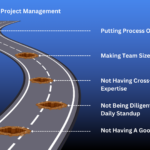In our lives and workplaces, the term “commitment” is often used to indicate dedication and loyalty. But have we taken the time to dig deeper into what it means to be committed versus simply feeling committed? Though the distinction might seem minor, it carries significant implications for our ability to generate tangible results.
Feeling committed often refers to a state of aspiration or obligation, typically based on emotional attachment. In contrast, being committed implies an active state of engagement, determination, and readiness to act to achieve a particular goal, regardless of feelings or circumstances.
The Impact of True Commitment
Let’s consider the example of someone who aspires to lose weight and voices their commitment to a healthier lifestyle. If they merely feel committed, they may only stick to their diet and exercise regimen when motivated or when it’s convenient. But if they are truly committed, they adhere to their plan even during holidays, stressful periods, or times when motivation wanes. This illustrates that while feeling committed is a start, being committed is what drives real, sustainable change.
The importance of understanding this distinction extends across every sphere of our lives – personal, professional, health, fitness, and more. Being committed, rather than just feeling committed, significantly influences the outcomes we achieve and the success we experience.
Holding Ourselves Accountable
A crucial aspect of being committed involves holding ourselves accountable. This accountability must be measurable and objectively defined; without a quantifiable standard, commitment can easily fall back into the realm of feeling rather than being.
Consider someone committed to losing weight; they don’t simply rely on subjective feelings of fitness or wellbeing but rather track progress using scales, measurement tapes, or body fat percentages. This measurement offers tangible proof of their commitment, serving as a motivator and a reminder of their progress.
But what about non-physical or intangible commitments, such as love or company culture? Even in these realms, measurement is not only possible but essential. A person committed to their partner might gauge their commitment by tracking the quality time spent together, the frequency of saying ‘I love you,’ or the number of selfless acts performed for their partner.
In a professional setting, if a leader is committed to improving company culture, they could use regular employee surveys to monitor morale, engagement levels, and overall satisfaction. This ongoing evaluation allows them to track progress, address concerns, and make data-driven decisions to improve their organization’s culture.
By giving thought to how we measure our commitments, we can make them tangible and real. This evidence not only reaffirms our commitment but also fuels our motivation to continue on our chosen path, especially when faced with obstacles or adversity.
Navigating the Journey from Feeling Committed to Being Committed
Transitioning from feeling committed to being committed requires a shift in mindset and attitude. It begins with a deep understanding of our values and the alignment of those values with our actions. We need to embrace consistency, resilience, and determination, even in the face of adversity.
However, this transformation doesn’t come without challenges. Obstacles like self-doubt, wavering motivation, societal pressure, or lack of support can hinder progress. Despite these difficulties, it’s these very tests that refine the authenticity of our commitment and catalyze growth.
In the professional sphere, leaders and managers play a vital role in fostering commitment. They can encourage team members to transition from feeling committed to being committed by nurturing a culture of transparency, accountability, and support.
One essential task of a leader is to bring clarity to thoughts and the language that team members use. Leaders must “see” the path that each person would take to fulfill what they’ve promised, breaking down the promise into a series of specific action items that are required to achieve the goal.
When leaders bring such clarity, they can anticipate and manage the potential fallout that might occur as a part of fulfilling promises. These oversights often lead to missed project deadlines and other issues. Therefore, as a leader, it’s crucial to create a space of clarity when working with team members, which in turn empowers them to effectively keep their promises and stay committed to their tasks.
By being committed to each teams members growth, setting clear expectations and providing regular feedback for improvement, sometimes even taking a step back, leaders can help individuals align their actions with their commitments. Through their leadership, they can guide their teams from the realm of feeling committed to truly being committed, resulting in a more engaged, motivated, and productive workforce.
Embracing the Journey
While being committed tends to yield superior results, feeling committed shouldn’t be disregarded entirely. It’s the initial spark that can ignite the flame of dedication. However, to keep that flame alight and translate it into concrete results, we must strive to move beyond feelings and fully embrace commitment.
Being committed surpasses feeling committed in its power to cause results and reach goals. It’s a testament to our resilience, strength, and determination. As we navigate the journey from feeling committed to being committed, we must remember that it’s this very path that shapes us, fuels our growth, and brings our goals within reach. Let’s embrace the challenges, hold ourselves accountable, and rise to the challenge of true commitment – that’s where the magic happens.
